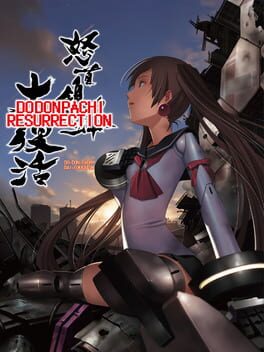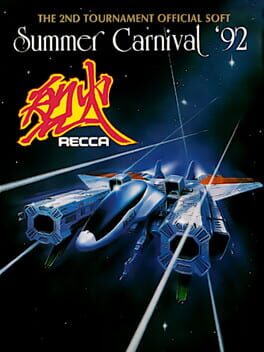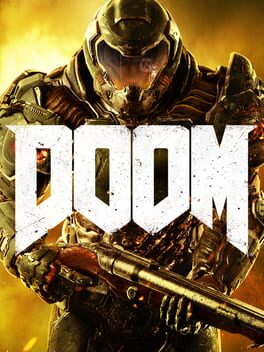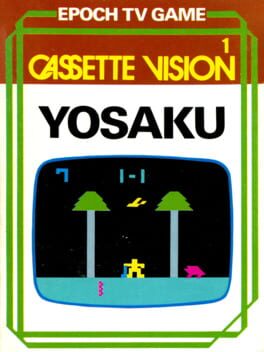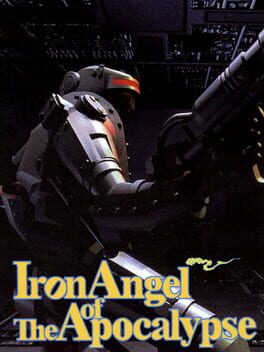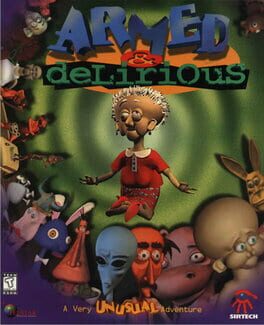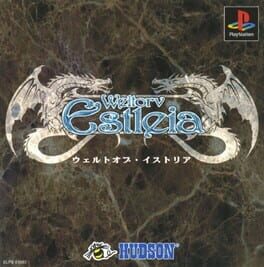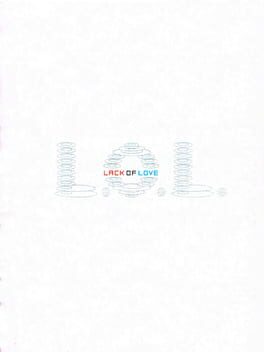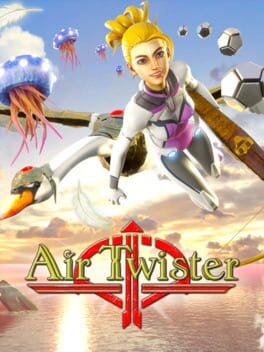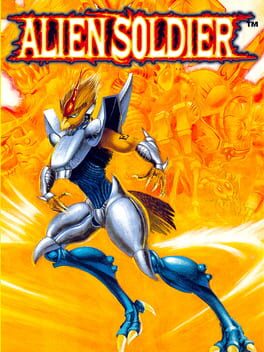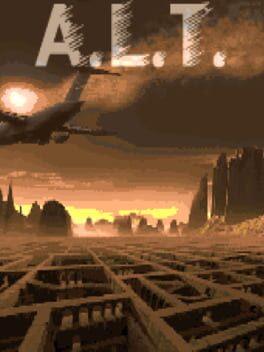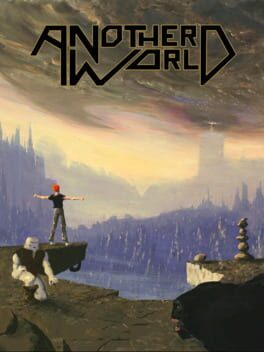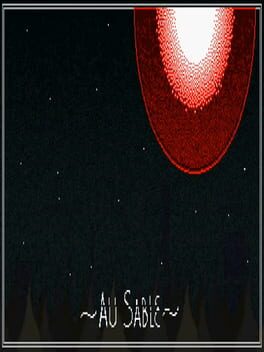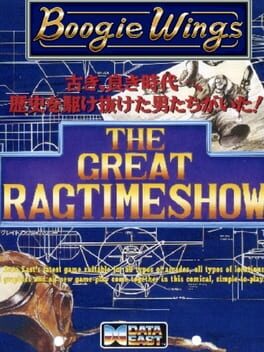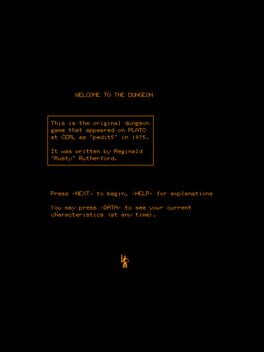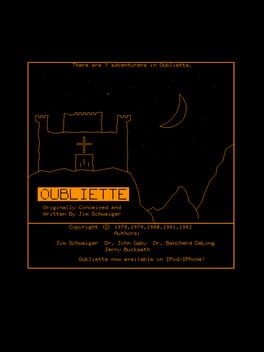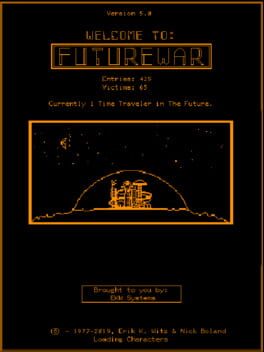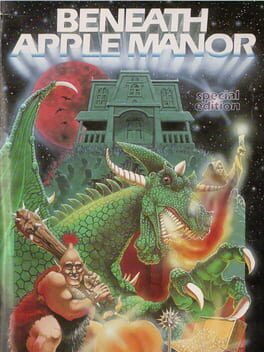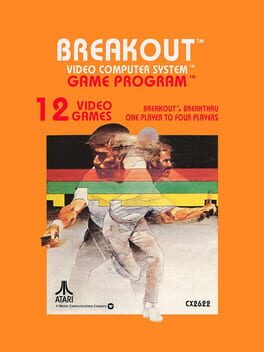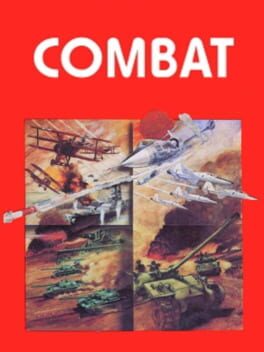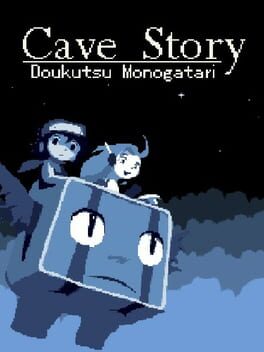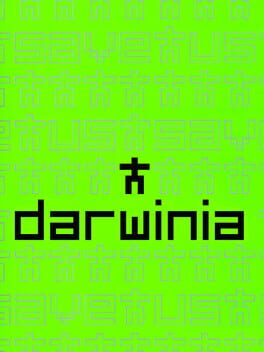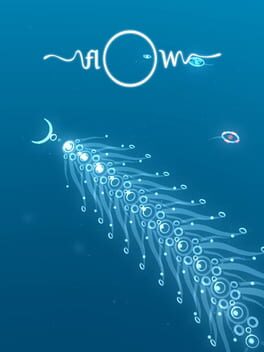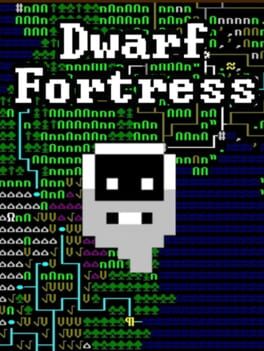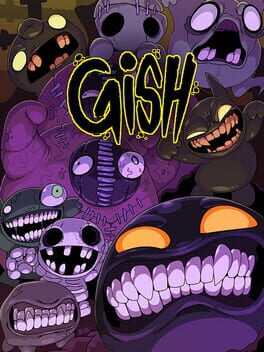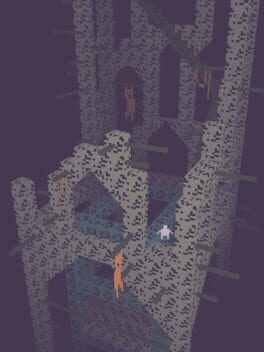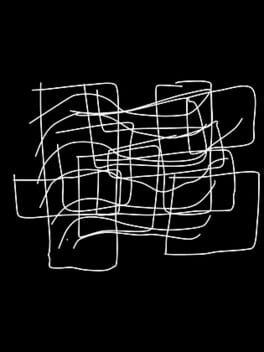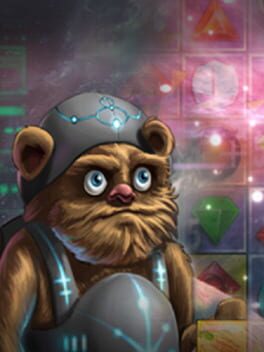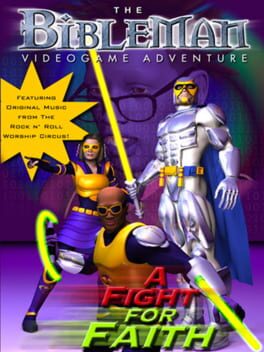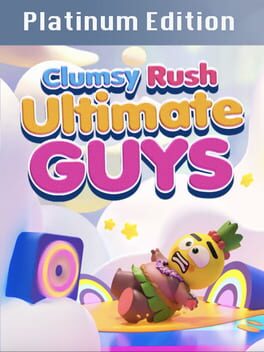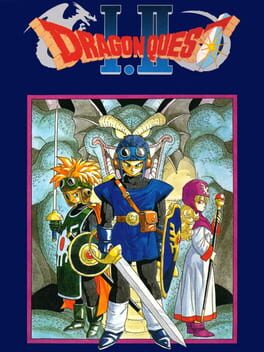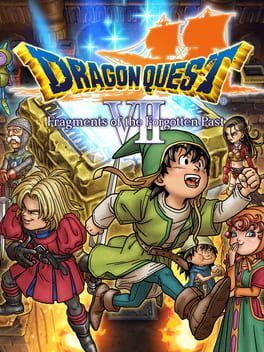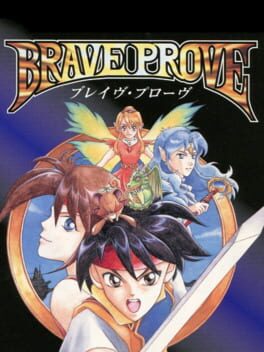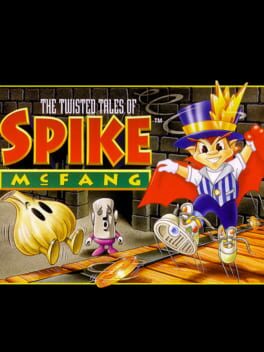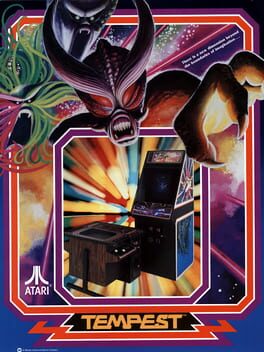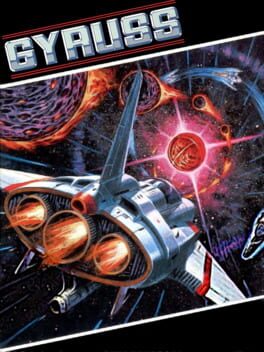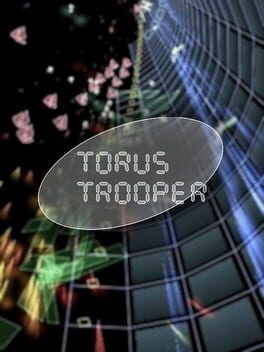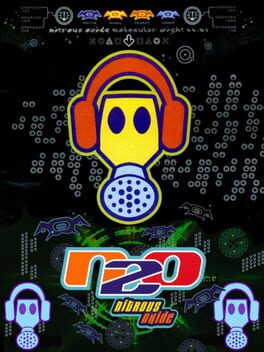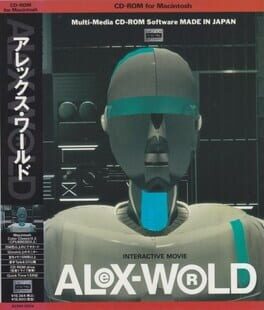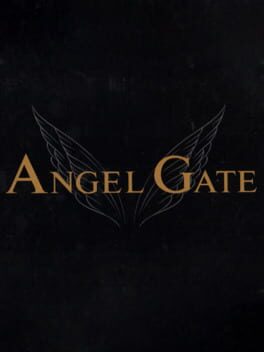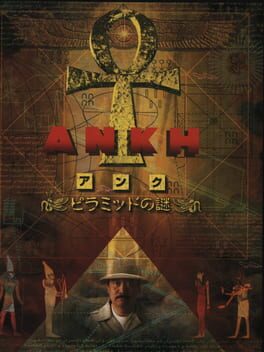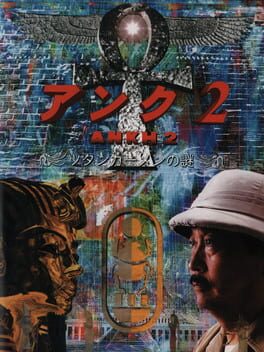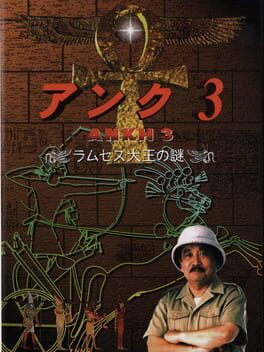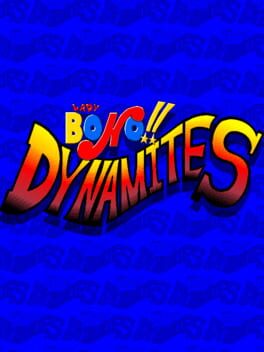215 reviews liked by anita
I got DDP Resurrection because I watched a review for a switch release of DDP DOJ, and then bought the wrong game. This game feels so WILD, you're pushed to be super aggressive, something the generous auto-bomb system seems to hint at... in the few stages I tried to learn (just 1-1 and 1-2) it felt like you had to be really preventative, like quickly managing all the escalating risks that would fly onto the screen - on top of the actual bullet avoidance. Being able to hyper your way out of a situation or to play it safe felt really cool.
I appreciate all the thought that goes into the design, the subtle ways in which bullet patterns escalate and build on each other, the fun of learning stages and then pulling the whole thing off in the end.
Of all things, shmups remind me the most of being a kid and trying to memorize songs on the piano, working through harder sections one at a time to try and pull the whole thing off ("Playing for Survival") and then going back and actually working in personal flair/expression ("Playing for Score"). Sort of like with shmups, I never really got too much into that hobby as a 'soloist' beyond playing in orchestra/band. And I don't think shmups and playing music are really that alike, but there does seem to be something similar in how you have to train/learn at both, and the way in which stuff that feels impossible slowly becomes possible.
Actually, it's hard not to try and compare shmups to many things in life! They (like other arcade games) really distill the whole difficulty/learning thing down to some pure essence. But in particular, these bullet hell shmups feel like they're compressing that essence even further - it's an interesting design space to learn from and experience.
I appreciate all the thought that goes into the design, the subtle ways in which bullet patterns escalate and build on each other, the fun of learning stages and then pulling the whole thing off in the end.
Of all things, shmups remind me the most of being a kid and trying to memorize songs on the piano, working through harder sections one at a time to try and pull the whole thing off ("Playing for Survival") and then going back and actually working in personal flair/expression ("Playing for Score"). Sort of like with shmups, I never really got too much into that hobby as a 'soloist' beyond playing in orchestra/band. And I don't think shmups and playing music are really that alike, but there does seem to be something similar in how you have to train/learn at both, and the way in which stuff that feels impossible slowly becomes possible.
Actually, it's hard not to try and compare shmups to many things in life! They (like other arcade games) really distill the whole difficulty/learning thing down to some pure essence. But in particular, these bullet hell shmups feel like they're compressing that essence even further - it's an interesting design space to learn from and experience.
I can simply no longer idly stand by while users with names like realbabymario who probably wear polos and adhere to their local exterior property maintenance bylaws say games are "like crack smoked crack"
if you'd like to keep comparing computer entertainment software to drugs I'm going to hereby require evidence that you've done them. to this end you may send a video clip with your username and partaking visible as well as a signed letter of guarantorship from your dealer and That Guy who's always chilling with your dealer to my personal address: johnerowid@gmail.com
anyway, more games should feel like technoweapons. I wanna feel disoriented and unhinged and experience immediate changes in my mental state. I wanna turn it off and feel like thick, heavy cables were yanked from base of my skull. the word visceral was commandeered by marketing freaks selling gratuitous 7th gen killporn animations to teenagers, but once in a while you get a chance to remember what it actually means
some games can take hours and hours to draw a potent reaction from you; this one takes a few seconds. soon as the garish flashing, unbearable speed, and famicom techno hits you immediately understand the experience and the relationship you're gonna have with it
one of the most convincing displays of technical wizardry you'll find in 1992 or otherwise. this is the exact moment yagawa the grey turned into yagawa the white. these boys weren't just cooking, they were on that molecular gastronomy shit. that FFIX 99 frogs shit. that meowscular chef shit — no dango in sight
this hits me like saying games "feel like they were made in an albuquerque RV" hits guys who think mexico's literally yellow
🥰🥰🥰🥰🥰
if you'd like to keep comparing computer entertainment software to drugs I'm going to hereby require evidence that you've done them. to this end you may send a video clip with your username and partaking visible as well as a signed letter of guarantorship from your dealer and That Guy who's always chilling with your dealer to my personal address: johnerowid@gmail.com
anyway, more games should feel like technoweapons. I wanna feel disoriented and unhinged and experience immediate changes in my mental state. I wanna turn it off and feel like thick, heavy cables were yanked from base of my skull. the word visceral was commandeered by marketing freaks selling gratuitous 7th gen killporn animations to teenagers, but once in a while you get a chance to remember what it actually means
some games can take hours and hours to draw a potent reaction from you; this one takes a few seconds. soon as the garish flashing, unbearable speed, and famicom techno hits you immediately understand the experience and the relationship you're gonna have with it
one of the most convincing displays of technical wizardry you'll find in 1992 or otherwise. this is the exact moment yagawa the grey turned into yagawa the white. these boys weren't just cooking, they were on that molecular gastronomy shit. that FFIX 99 frogs shit. that meowscular chef shit — no dango in sight
this hits me like saying games "feel like they were made in an albuquerque RV" hits guys who think mexico's literally yellow
🥰🥰🥰🥰🥰
Doom
2016
almost a good game, held back by memes and insecurity
doom (1993) is a game entirely focused on level design. you are 'exploring the level' at all times. combat encounters are part of the exploration. weapon pickups are part of the exploration. secret hunting is part of the exploration. every single action you take, sans the minutiae of combat (projectile dodging, bfg trickery, etc), is you engaging with the design of the level. you can beat every map in the game launched directly, with just the starting pistol and health. this is not an accident. levels are not scenes in a movie, or episodes in a show, but songs in an album. in this sense it (and doom 2, and quake) is much like an early mario, or sonic, or dungeon crawler. that hint of dungeon crawl is extremely important to doom; many spaces are designed to mess with you. you need to master the spaces to even finish the level. they're called "maps" for a reason!
doom 2016 is a game about systems. encounter design, weapon pickups, and secret hunting are all constrained based on how they want you to engage with the combat and progression systems. levels get cleaved into two modes: "looking around for stuff to unlock" and "boxed off combat." let me explain.
this game is structured around upgrades. in order to fully kit out doomslayer, you need to find all of the:
-weapons
-points to unlock weapon mods (hot-swappable altfire modes, two per weapon)
-points to upgrade weapon mods (2-3 per weapon mod)
-"mastery" upgrades for fully upgraded weapon mods
-points to upgrade the praetor suit
-second type of points for second type of praetor suit upgrade
-runes (think CoD perk system, or old LoL runepages), unlocked for doing specific instanced challenges
-slots for runes, unlocked for doing an amount of instanced challenges
-"mastery" upgrades for runes
that's nine different types of unlock. nine. for reference, the only one of these systems in the original games is "finding the weapons."
these upgrades aren't tiny, either. there's no Path of Exile "+1.3% Shock damage to Undead type enemies (Melee only)" here. instead you're unlocking things like "weapon switch speed." "immunity to explosive barrels." "bullet penetration." "reload speed for your altfire." "maximum health." these aren't minor things, they are the fundamentals of the actual combat system, the sort of thing you argue about in a competitive game. and because the game is entirely focused on its combat system, this means you only get to start playing The Actual Game - juggling weapons with the actual swap speed, using the various types of weapon mod, being able to double-jump with proper air control, or do glory kills from full range - once you find the right number of these upgrades. it's maddening.
note i am saying "find." not "get," but "find." because, yes, the obsession with upgrade systems infected the secrets too. the upgrades , or the challenges you have to do to get the upgrades, are scattered around the levels in random dead ends, or vents, at the end of "platforming" segments, or occasionally in actually optional chunks of level. you are often given three paths, two which lead to objectives (sometimes the same objective) and one slightly hidden one which leads you to the body of an Elite Guard with a Praetor Token, or an Argent Cell, or a portal to a Rune Trial, or one of 48 collectible Funko Pops, or some other nonsense. i think this is done to make secrets "Feel Rewarding," compared to the original Doom, where you'd usually just be given full health and armor, or maybe a temporary powerup. but really, it does the opposite. you have to find secrets, or else you are going to be behind on upgrades, and the secrets can't be too secret or else people won't be able to find them. the automap marks them on the map screen before you even find them, because they know you are going to need them. so, you are not engaging with the design of the level. there is no feeling of solving a puzzle, or "getting the joke," or just finding something interesting. you are just checking things off a list in the corner of the map screen.
i can imagine some rebuttals to this. "you can just not get the upgrade points," etc. sure. they can also "just" not make me unlock half of the mechanics in the game. this is one of the oldest complaints about Devil May Cry (a game these designers are clearly enamored with), or God of War, or any other Action-First Action Game w/ this sort of system - "the game doesn't start until you unlock a bunch of moves," "why can't you just start with Enemy Step," etc. I am not really fond of DMC in the first place, but it does eventually become a very good game once you get over that hump. i do not understand why idsoft decided to triple down on this, instead. and either way, these "you control the buttons you press" type responses ignore the actual incentives set by the progression systems, which the designers were clearly quite excited about having come up with, what with it dictating every part of the game. nobody would make a complaint like this if they hadn't built the game in this way!
anyways, while you're scrounging for upgrade points, you will eventually find yourself in a Combat Zone. these are (either functionally or actually) boxed off areas where enemies spawn, repeatedly, for a certain amount of time, much like DMC, or Serious Sam, or Painkiller, or other games I don't really enjoy specifically because of this "boxes connected by hallways" format. but at least the actual combat you do in here is pretty good. ultraviolence difficulty forces you to do a lot of weapon swapping, a la Quake 3 rocket/clan arena mode, with the positioning dances of Quake 1 or a Halo. the glory kill system is cool and gives fights a nice ebb and flow. it's pretty fun! at least, once you unlock the fun version of the game, where you're able to do the weapon swapping and do glory kills from full range and take more than 150 damage before dying and and and...
actually, no, let's talk about the combat. it's the only thing this game has going for it, so i have to give it more than two sentences. i want to compare it, again, to doom 93, because its the only way to explain the differences between the two.
the combat in the original doom is extremely similar to arcade scrolling shooters - gradius, xevious, eXceed 3rd Jade Penetrate Black Package, etc etc. you can strafe, you can fire hitscan weapons, you can fire projectile weapons, you can fire slower projectile weapons that explode on impact. some enemies shoot hitscan, others shoot projectiles, others do melee stuff. the game mostly boils down to dodging projectiles, circle strafing, and occasional cover peeking. this is not a problem. it's simple, it's fun to handle, and given good level and encounter design, it can be incredibly fun and interesting. your ammo economy decisions happen across the entire level: "i won't use this weapon in this fight because i want to have ammo for it in the next fight, which has these enemies," etc. this is, again, a strategic decision that can be fun, or interesting, or stressful, or whathaveyou, in the hands of the right designer. in this way, Doom is closer to an older dungeon crawler than a modern first-person shooter. remember that the original inspiration for the id FPS games was Carmack seeing a demo of Ultima Underworld at a trade show, and going "I could do that, but faster!" Ultima Underworld is a very slow, simulationist game about having to survive in a locked dungeon. It was a direct response to Dungeon Master, which itself was a real-time, semi-simulationist take on the Wizardry/Bard's Tale/Might&Magic style of first-person party-based grid-movement dungeon crawler (if you've played Legend of Grimrock, you've basically played Dungeon Master). With this info, we can start to understand these early id games as a type of dungeon crawler. The first of the "real" FPS games they made, Catacomb 3D (Hovertank is a tech demo shut up), lifted heavily from Gauntlet, an early arcade Action RPG. Wolf3D is faster, more refined Catacomb. Doom is faster, more refined Wolf3D. Quake is... etc. This is why the level design is like that. This is why the item economy is like that, why Wolf3D had "meaningless" rooms where you pick up treasure, why you were meant to get lost. Even the "bumping into walls trying to find the last secret in the map" bullshit is lifted directly from Wizardry.
unfortunately, while making their weird arcade-action dungeon crawler, they also decided to give it a gory, hypermasculine speed metal aesthetic to complement its Blazing Fast Graphics. this opened them up to controversy, reinterpretation, and controversy-fueled reinterpretation. Doom, a game where you stumble your way through weird pitch black corridors filled with nonsense monsters, became something you played to prove you were a Real, Hardened Man of a 17 year old. (yes, it always had the chainsaw, the rampage powerup, the gore sprites - i've played it dozens of times, I know). this feedback loop brings us to the doom comic.
in 1996, which I want to remind you was four years after doom came out, Marvel released a one-off Doom promotional comic. it cold opens with Doomguy punching a bunch of demons while dropping bad one-liners. "I'm a 12.0 on the 10.0 scale of badness!" "Knock knock, who's there? ME!" etc. on page 3, Methguy finds himself a cyberdemon. he exclaims, "You are huge! That means you have huge guts! Rip and tear! Rip and tear your guts!" And then he, well, who cares. Nobody cared at the time, at least. Only a few more people cared after Lowtax (eugh) dug it up for a Planetquake article 5 years later. But eventually, through the power of memetics, the phrase "Rip And Tear Your Guts," a dumb one-liner from a comic nobody had ever read, became the soul of Doom, to a certain kind of person. When the mod "Brutal Doom" came out in 2010, and added fancier gore, headshot mechanics, Mortal Kombat fatalities, and a bunch of other superfluous dumb shit, that impression of Doom went well beyond the Doomworld shitposters and landed straight in people's Youtube recommendations. That, I'm fairly sure, is how Doom 2016 ended up more inspired by a line from an ad than the actual game it's actually meant to "reboot."
The opening cutscene of 2016 ends with the line "rip and tear until it is done." The glory kill, the game's Clever Mechanic, is a "rip and tear" button. That's not to say it's not fun. Being able to turn enemies into health is cool, and keeps the game from feeling as bland as other "boxes in a row" shooters. But it serves that meme revisionism just as much as it serves the game design. This game is not in conversation with Doom. It is not building on what id was doing with Doom. It does not "bring Doom forward to a new generation." It is an adaptation of one single panel from a shitty advertisement comic book the creators had no hand in, by way of mechanics from "Character Action" games and the worst Eurotrash shooters of the mid 2000s. This frustrated me in 2016, and it frustrates me now, years after the initial disappointment wore off.
so. the level design sucks. the cutscenes suck. (have i mentioned this game has unskippable cutscenes? they're bad!). the sections where you have to stand around and listen to someone tell you that someone is trying to access someone's secret files through the Vega terminus in the ruins of the Archon reprocessor core or whatever before you can start playing the level, suck. they even do that Whedon thing where the protagonist, in world, gets mad that someone would have the gall to make him sit through an exposition dump in a Doom game, in the first five minutes of the game, and then they keep fucking doing it! the platforming, something they stuck in here even having eighteen years to take a semicritical look at Half-Life, also kinda sucks, until halfway thru the game when you find the challenge to unlock tier 1 of the perk that gives you vaguely Quake air-control instead of Halo floatiness. really, every part of the game, outside the boxes where you're doing combat, is either bland, or annoying, or Actively Bad. and the combat's only good once you've spent a few hours dealing with the upgrade system, which also sucks. the most fun I've had is cranking the difficulty in arcade mode, which lets you skip most of that fluff. not all, just most. i dunno, man!
I am sure the people who were peeing their pants over this game in 2016 were doing so sincerely. but i find myself wondering how many of them had played the original game, or how long it had been since they'd done so, and what they would say they liked about it if asked, because absolutely none of what's kept that game fun, interesting good for thirty years is present here. just download some mods for that instead.
doom (1993) is a game entirely focused on level design. you are 'exploring the level' at all times. combat encounters are part of the exploration. weapon pickups are part of the exploration. secret hunting is part of the exploration. every single action you take, sans the minutiae of combat (projectile dodging, bfg trickery, etc), is you engaging with the design of the level. you can beat every map in the game launched directly, with just the starting pistol and health. this is not an accident. levels are not scenes in a movie, or episodes in a show, but songs in an album. in this sense it (and doom 2, and quake) is much like an early mario, or sonic, or dungeon crawler. that hint of dungeon crawl is extremely important to doom; many spaces are designed to mess with you. you need to master the spaces to even finish the level. they're called "maps" for a reason!
doom 2016 is a game about systems. encounter design, weapon pickups, and secret hunting are all constrained based on how they want you to engage with the combat and progression systems. levels get cleaved into two modes: "looking around for stuff to unlock" and "boxed off combat." let me explain.
this game is structured around upgrades. in order to fully kit out doomslayer, you need to find all of the:
-weapons
-points to unlock weapon mods (hot-swappable altfire modes, two per weapon)
-points to upgrade weapon mods (2-3 per weapon mod)
-"mastery" upgrades for fully upgraded weapon mods
-points to upgrade the praetor suit
-second type of points for second type of praetor suit upgrade
-runes (think CoD perk system, or old LoL runepages), unlocked for doing specific instanced challenges
-slots for runes, unlocked for doing an amount of instanced challenges
-"mastery" upgrades for runes
that's nine different types of unlock. nine. for reference, the only one of these systems in the original games is "finding the weapons."
these upgrades aren't tiny, either. there's no Path of Exile "+1.3% Shock damage to Undead type enemies (Melee only)" here. instead you're unlocking things like "weapon switch speed." "immunity to explosive barrels." "bullet penetration." "reload speed for your altfire." "maximum health." these aren't minor things, they are the fundamentals of the actual combat system, the sort of thing you argue about in a competitive game. and because the game is entirely focused on its combat system, this means you only get to start playing The Actual Game - juggling weapons with the actual swap speed, using the various types of weapon mod, being able to double-jump with proper air control, or do glory kills from full range - once you find the right number of these upgrades. it's maddening.
note i am saying "find." not "get," but "find." because, yes, the obsession with upgrade systems infected the secrets too. the upgrades , or the challenges you have to do to get the upgrades, are scattered around the levels in random dead ends, or vents, at the end of "platforming" segments, or occasionally in actually optional chunks of level. you are often given three paths, two which lead to objectives (sometimes the same objective) and one slightly hidden one which leads you to the body of an Elite Guard with a Praetor Token, or an Argent Cell, or a portal to a Rune Trial, or one of 48 collectible Funko Pops, or some other nonsense. i think this is done to make secrets "Feel Rewarding," compared to the original Doom, where you'd usually just be given full health and armor, or maybe a temporary powerup. but really, it does the opposite. you have to find secrets, or else you are going to be behind on upgrades, and the secrets can't be too secret or else people won't be able to find them. the automap marks them on the map screen before you even find them, because they know you are going to need them. so, you are not engaging with the design of the level. there is no feeling of solving a puzzle, or "getting the joke," or just finding something interesting. you are just checking things off a list in the corner of the map screen.
i can imagine some rebuttals to this. "you can just not get the upgrade points," etc. sure. they can also "just" not make me unlock half of the mechanics in the game. this is one of the oldest complaints about Devil May Cry (a game these designers are clearly enamored with), or God of War, or any other Action-First Action Game w/ this sort of system - "the game doesn't start until you unlock a bunch of moves," "why can't you just start with Enemy Step," etc. I am not really fond of DMC in the first place, but it does eventually become a very good game once you get over that hump. i do not understand why idsoft decided to triple down on this, instead. and either way, these "you control the buttons you press" type responses ignore the actual incentives set by the progression systems, which the designers were clearly quite excited about having come up with, what with it dictating every part of the game. nobody would make a complaint like this if they hadn't built the game in this way!
anyways, while you're scrounging for upgrade points, you will eventually find yourself in a Combat Zone. these are (either functionally or actually) boxed off areas where enemies spawn, repeatedly, for a certain amount of time, much like DMC, or Serious Sam, or Painkiller, or other games I don't really enjoy specifically because of this "boxes connected by hallways" format. but at least the actual combat you do in here is pretty good. ultraviolence difficulty forces you to do a lot of weapon swapping, a la Quake 3 rocket/clan arena mode, with the positioning dances of Quake 1 or a Halo. the glory kill system is cool and gives fights a nice ebb and flow. it's pretty fun! at least, once you unlock the fun version of the game, where you're able to do the weapon swapping and do glory kills from full range and take more than 150 damage before dying and and and...
actually, no, let's talk about the combat. it's the only thing this game has going for it, so i have to give it more than two sentences. i want to compare it, again, to doom 93, because its the only way to explain the differences between the two.
the combat in the original doom is extremely similar to arcade scrolling shooters - gradius, xevious, eXceed 3rd Jade Penetrate Black Package, etc etc. you can strafe, you can fire hitscan weapons, you can fire projectile weapons, you can fire slower projectile weapons that explode on impact. some enemies shoot hitscan, others shoot projectiles, others do melee stuff. the game mostly boils down to dodging projectiles, circle strafing, and occasional cover peeking. this is not a problem. it's simple, it's fun to handle, and given good level and encounter design, it can be incredibly fun and interesting. your ammo economy decisions happen across the entire level: "i won't use this weapon in this fight because i want to have ammo for it in the next fight, which has these enemies," etc. this is, again, a strategic decision that can be fun, or interesting, or stressful, or whathaveyou, in the hands of the right designer. in this way, Doom is closer to an older dungeon crawler than a modern first-person shooter. remember that the original inspiration for the id FPS games was Carmack seeing a demo of Ultima Underworld at a trade show, and going "I could do that, but faster!" Ultima Underworld is a very slow, simulationist game about having to survive in a locked dungeon. It was a direct response to Dungeon Master, which itself was a real-time, semi-simulationist take on the Wizardry/Bard's Tale/Might&Magic style of first-person party-based grid-movement dungeon crawler (if you've played Legend of Grimrock, you've basically played Dungeon Master). With this info, we can start to understand these early id games as a type of dungeon crawler. The first of the "real" FPS games they made, Catacomb 3D (Hovertank is a tech demo shut up), lifted heavily from Gauntlet, an early arcade Action RPG. Wolf3D is faster, more refined Catacomb. Doom is faster, more refined Wolf3D. Quake is... etc. This is why the level design is like that. This is why the item economy is like that, why Wolf3D had "meaningless" rooms where you pick up treasure, why you were meant to get lost. Even the "bumping into walls trying to find the last secret in the map" bullshit is lifted directly from Wizardry.
unfortunately, while making their weird arcade-action dungeon crawler, they also decided to give it a gory, hypermasculine speed metal aesthetic to complement its Blazing Fast Graphics. this opened them up to controversy, reinterpretation, and controversy-fueled reinterpretation. Doom, a game where you stumble your way through weird pitch black corridors filled with nonsense monsters, became something you played to prove you were a Real, Hardened Man of a 17 year old. (yes, it always had the chainsaw, the rampage powerup, the gore sprites - i've played it dozens of times, I know). this feedback loop brings us to the doom comic.
in 1996, which I want to remind you was four years after doom came out, Marvel released a one-off Doom promotional comic. it cold opens with Doomguy punching a bunch of demons while dropping bad one-liners. "I'm a 12.0 on the 10.0 scale of badness!" "Knock knock, who's there? ME!" etc. on page 3, Methguy finds himself a cyberdemon. he exclaims, "You are huge! That means you have huge guts! Rip and tear! Rip and tear your guts!" And then he, well, who cares. Nobody cared at the time, at least. Only a few more people cared after Lowtax (eugh) dug it up for a Planetquake article 5 years later. But eventually, through the power of memetics, the phrase "Rip And Tear Your Guts," a dumb one-liner from a comic nobody had ever read, became the soul of Doom, to a certain kind of person. When the mod "Brutal Doom" came out in 2010, and added fancier gore, headshot mechanics, Mortal Kombat fatalities, and a bunch of other superfluous dumb shit, that impression of Doom went well beyond the Doomworld shitposters and landed straight in people's Youtube recommendations. That, I'm fairly sure, is how Doom 2016 ended up more inspired by a line from an ad than the actual game it's actually meant to "reboot."
The opening cutscene of 2016 ends with the line "rip and tear until it is done." The glory kill, the game's Clever Mechanic, is a "rip and tear" button. That's not to say it's not fun. Being able to turn enemies into health is cool, and keeps the game from feeling as bland as other "boxes in a row" shooters. But it serves that meme revisionism just as much as it serves the game design. This game is not in conversation with Doom. It is not building on what id was doing with Doom. It does not "bring Doom forward to a new generation." It is an adaptation of one single panel from a shitty advertisement comic book the creators had no hand in, by way of mechanics from "Character Action" games and the worst Eurotrash shooters of the mid 2000s. This frustrated me in 2016, and it frustrates me now, years after the initial disappointment wore off.
so. the level design sucks. the cutscenes suck. (have i mentioned this game has unskippable cutscenes? they're bad!). the sections where you have to stand around and listen to someone tell you that someone is trying to access someone's secret files through the Vega terminus in the ruins of the Archon reprocessor core or whatever before you can start playing the level, suck. they even do that Whedon thing where the protagonist, in world, gets mad that someone would have the gall to make him sit through an exposition dump in a Doom game, in the first five minutes of the game, and then they keep fucking doing it! the platforming, something they stuck in here even having eighteen years to take a semicritical look at Half-Life, also kinda sucks, until halfway thru the game when you find the challenge to unlock tier 1 of the perk that gives you vaguely Quake air-control instead of Halo floatiness. really, every part of the game, outside the boxes where you're doing combat, is either bland, or annoying, or Actively Bad. and the combat's only good once you've spent a few hours dealing with the upgrade system, which also sucks. the most fun I've had is cranking the difficulty in arcade mode, which lets you skip most of that fluff. not all, just most. i dunno, man!
I am sure the people who were peeing their pants over this game in 2016 were doing so sincerely. but i find myself wondering how many of them had played the original game, or how long it had been since they'd done so, and what they would say they liked about it if asked, because absolutely none of what's kept that game fun, interesting good for thirty years is present here. just download some mods for that instead.
Kikori no Yosaku
1981
ヘイヘイホー ヘイヘイホー
「hei hei hou, hei hei hou」
You're probably never going to play Yosaku. Nobody will. It appears only in scant screenshots, an arcade flyer, mention in SNK 40th Anniversary Collection, as an easter egg in The King of Fighters: Battle de Paradise, and demonstrated in a single YouTube video. Releasing shortly before Safari Rally and Ozma Wars, Yosaku remains undumped (if not entirely lost) alongside SNK's earliest 'Micon Kit' Breakout clones. In spite of its obscurity, Yosaku is a foundational game not just for SNK, but for the early Japanese games market as a whole.
ヘイヘイホー ヘイヘイホー
「hei hei hou, hei hei hou」
The premise of Yosaku is pretty simple. The player is a lumberjack, toiling away in the forest while branches fall, birds defecate, boars charge, and snakes slither. Avoid danger, chop the trees, get a high score. It is by no means groundbreaking but for a 1979 release it seems to be decently fun. What is fascinating about Yosaku stems from what inspired it: an Enka song popularised by Saburou Kitajima in 1978.
トントントン トントントン
「tontonton, tontonton」
One of Sabu-chan's most famous works, Yosaku similarly tells the basic tale of the titular Yosaku chipping away at a tree while his wife performs domestic duties. Written by religious scholar and critic Kiminori Nanasawa, Yosaku was a submission to the long-running NHK musical variety show Anata no Melody. The conceit of the program was that amateur songwriters would submit their work to be performed by professional musicians. Yosaku's sparse lyrics are abound with onomotapoeia, and it's just a great track overall. In fact, the game Yosaku features part of the melody of the song Yosaku as sung by Sabu-chan, and it's officially licensed from the Japanese Society for Rights of Authors, Composers and Publishers, one of the first video games to bear their legal blessing.
トントントン トントントン
「tontonton, tontonton」
Lest we forget, this was the era of the arcade clone. Perhaps in a cruel twist of irony then for a company founded on Breakout clones, Yosaku is known less for its arcade release, and more for the unlicensed, unsanctioned copycat which released at the launch of the Epoch Cassette Vision. Kikori no Yosaku sees the detailed SNK original reduced to its barest geometries and most base elements. The much chunkier graphics reduce the playfield to just two trees instead of Yosaku's three. Unable to litter the space with smaller but more plentiful hazards, Kikori no Yosaku's dangers are the unhewn log to Yosaku's two-by-four. Rather than allow Yosaku to hide behind trees, Epoch's version leaps over boars. And even without the legal go ahead, Kikori no Yosaku has a crude rendition of those same bars from Sabu-chan's hit song.
ホーホー ホーホー
「houhou, houhou」
The Epoch Cassette Vision held 70% of the games console market in Japan by 1982. 'Video Games Console Library' makes the unsubstantiated claim that Kikori no Yosaku was the game that made the Cassette Vision as successful as it was. It's impossible to concretely corroborate this, but considering it was a launch title (and labelled as #1), it would certainly have drawn some customers in. Furthermore, Cassette Vision game releases were glacial, being made in-house by only three developers with a new title hitting shelves every quarter. An interview with Epoch designer and supervisor Masayuki Horie similarly asserts that Kikori no Yosaku is the first game people talk about when the Cassette Vision is discussed. Horie mentions that industry shows saw developers trying to discern which games would be popular, and thus fit for cloning, so Kikori no Yosaku's significance may well be true.
ヘイヘイホー ヘイヘイホー
「hei hei hou, hei hei hou」
With such a storied past, one might want to play Kikori no Yosaku for themselves. Well, you're probably never going to play the Cassette Vision release of Kikori no Yosaku, and not for lack of trying. A key quirk of the Cassette Vision is that the console itself is effectively just an AV passthrough. It lacks a processor. Unlike with other cartridge-based systems, Cassette Vision games house the software and hardware which allowed vastly faster operation. This means emulation is, while not impossible, entirely too cumbersome for anyone to have meaningfully tackled it thus far - ROM dumps for all eleven releases do now exist at least. Barring the purchase of antiquated hardware, Kikori no Yosaku is just as playable as Yosaku.
ヘイヘイホー ヘイヘイホー
「hei hei hou, hei hei hou」
Or so I thought. As it turns out, an unofficial port of Kikori no Yosaku came to the Sharp X68000 in 1991 thanks to IJI Team. This clone of a clone is a near-exact recreation of the Cassette Vision original, down to the graphical quirks of diagonal sprites. The only substantial difference I was able to spot has to do with the colours themselves, which are more pastel on Cassette Vision than they are on X68000 - this may be due to the oddities of RF connections.
トントントン トントントン
「tontonton, tontonton」
All told, Kikori no Yosaku is a pretty fun romp, albeit a pretty easy one when not playing on the higher difficulties. The circumstances of its creation as a clone of an oddly seminal title, which itself is only accessible thanks to another clone, make it noteworthy. Furthermore, the X68000 version is the only such recreation of an Epoch Cassette Vision game. Even the absurd Pac-Man clone PakPak Monster remains bound to the original hardware.
トントントン トントントン
「tontonton, tontonton」
Yosaku is a hit enka song written by an obscure amateur.
Yosaku is one of the only lost SNK titles.
Yosaku is one of the first games to have music licensed by JASRAC.
Yosaku is perhaps responsible for the success of the Epoch Cassette Vision.
Yosaku is emblematic of the wild west of early video game (non)copyright.
Yosaku is a chunky, shameless copy.
Yosaku is a near-perfect recreation.
Yosaku is simple but elegant.
ホーホー ホーホー
「houhou, houhou」
「hei hei hou, hei hei hou」
You're probably never going to play Yosaku. Nobody will. It appears only in scant screenshots, an arcade flyer, mention in SNK 40th Anniversary Collection, as an easter egg in The King of Fighters: Battle de Paradise, and demonstrated in a single YouTube video. Releasing shortly before Safari Rally and Ozma Wars, Yosaku remains undumped (if not entirely lost) alongside SNK's earliest 'Micon Kit' Breakout clones. In spite of its obscurity, Yosaku is a foundational game not just for SNK, but for the early Japanese games market as a whole.
ヘイヘイホー ヘイヘイホー
「hei hei hou, hei hei hou」
The premise of Yosaku is pretty simple. The player is a lumberjack, toiling away in the forest while branches fall, birds defecate, boars charge, and snakes slither. Avoid danger, chop the trees, get a high score. It is by no means groundbreaking but for a 1979 release it seems to be decently fun. What is fascinating about Yosaku stems from what inspired it: an Enka song popularised by Saburou Kitajima in 1978.
トントントン トントントン
「tontonton, tontonton」
One of Sabu-chan's most famous works, Yosaku similarly tells the basic tale of the titular Yosaku chipping away at a tree while his wife performs domestic duties. Written by religious scholar and critic Kiminori Nanasawa, Yosaku was a submission to the long-running NHK musical variety show Anata no Melody. The conceit of the program was that amateur songwriters would submit their work to be performed by professional musicians. Yosaku's sparse lyrics are abound with onomotapoeia, and it's just a great track overall. In fact, the game Yosaku features part of the melody of the song Yosaku as sung by Sabu-chan, and it's officially licensed from the Japanese Society for Rights of Authors, Composers and Publishers, one of the first video games to bear their legal blessing.
トントントン トントントン
「tontonton, tontonton」
Lest we forget, this was the era of the arcade clone. Perhaps in a cruel twist of irony then for a company founded on Breakout clones, Yosaku is known less for its arcade release, and more for the unlicensed, unsanctioned copycat which released at the launch of the Epoch Cassette Vision. Kikori no Yosaku sees the detailed SNK original reduced to its barest geometries and most base elements. The much chunkier graphics reduce the playfield to just two trees instead of Yosaku's three. Unable to litter the space with smaller but more plentiful hazards, Kikori no Yosaku's dangers are the unhewn log to Yosaku's two-by-four. Rather than allow Yosaku to hide behind trees, Epoch's version leaps over boars. And even without the legal go ahead, Kikori no Yosaku has a crude rendition of those same bars from Sabu-chan's hit song.
ホーホー ホーホー
「houhou, houhou」
The Epoch Cassette Vision held 70% of the games console market in Japan by 1982. 'Video Games Console Library' makes the unsubstantiated claim that Kikori no Yosaku was the game that made the Cassette Vision as successful as it was. It's impossible to concretely corroborate this, but considering it was a launch title (and labelled as #1), it would certainly have drawn some customers in. Furthermore, Cassette Vision game releases were glacial, being made in-house by only three developers with a new title hitting shelves every quarter. An interview with Epoch designer and supervisor Masayuki Horie similarly asserts that Kikori no Yosaku is the first game people talk about when the Cassette Vision is discussed. Horie mentions that industry shows saw developers trying to discern which games would be popular, and thus fit for cloning, so Kikori no Yosaku's significance may well be true.
ヘイヘイホー ヘイヘイホー
「hei hei hou, hei hei hou」
With such a storied past, one might want to play Kikori no Yosaku for themselves. Well, you're probably never going to play the Cassette Vision release of Kikori no Yosaku, and not for lack of trying. A key quirk of the Cassette Vision is that the console itself is effectively just an AV passthrough. It lacks a processor. Unlike with other cartridge-based systems, Cassette Vision games house the software and hardware which allowed vastly faster operation. This means emulation is, while not impossible, entirely too cumbersome for anyone to have meaningfully tackled it thus far - ROM dumps for all eleven releases do now exist at least. Barring the purchase of antiquated hardware, Kikori no Yosaku is just as playable as Yosaku.
ヘイヘイホー ヘイヘイホー
「hei hei hou, hei hei hou」
Or so I thought. As it turns out, an unofficial port of Kikori no Yosaku came to the Sharp X68000 in 1991 thanks to IJI Team. This clone of a clone is a near-exact recreation of the Cassette Vision original, down to the graphical quirks of diagonal sprites. The only substantial difference I was able to spot has to do with the colours themselves, which are more pastel on Cassette Vision than they are on X68000 - this may be due to the oddities of RF connections.
トントントン トントントン
「tontonton, tontonton」
All told, Kikori no Yosaku is a pretty fun romp, albeit a pretty easy one when not playing on the higher difficulties. The circumstances of its creation as a clone of an oddly seminal title, which itself is only accessible thanks to another clone, make it noteworthy. Furthermore, the X68000 version is the only such recreation of an Epoch Cassette Vision game. Even the absurd Pac-Man clone PakPak Monster remains bound to the original hardware.
トントントン トントントン
「tontonton, tontonton」
Yosaku is a hit enka song written by an obscure amateur.
Yosaku is one of the only lost SNK titles.
Yosaku is one of the first games to have music licensed by JASRAC.
Yosaku is perhaps responsible for the success of the Epoch Cassette Vision.
Yosaku is emblematic of the wild west of early video game (non)copyright.
Yosaku is a chunky, shameless copy.
Yosaku is a near-perfect recreation.
Yosaku is simple but elegant.
ホーホー ホーホー
「houhou, houhou」
drip and swag are all that matter in this world; assimilation is underway
the atmosphere here is so oppressively dense that it almost makes me forget i'm playing one of the worst feeling shooters to ever be released by a professional company. it's like if faceball 2000 somehow ran at an even lower framerate and was intended for people who'd never had nice days in their entire lives
but that fucking vibe is immaculate. the premise is hopelessly bleak without feeling tryhard, the industrial soundtrack is somehow more mechanically clunky than the gameplay itself and the cutscene direction rivals actual fucking cinema despite being from 1994. who the fuck made this??
oh - it's the guys behind gadget: past as future
alright that explains everything
the atmosphere here is so oppressively dense that it almost makes me forget i'm playing one of the worst feeling shooters to ever be released by a professional company. it's like if faceball 2000 somehow ran at an even lower framerate and was intended for people who'd never had nice days in their entire lives
but that fucking vibe is immaculate. the premise is hopelessly bleak without feeling tryhard, the industrial soundtrack is somehow more mechanically clunky than the gameplay itself and the cutscene direction rivals actual fucking cinema despite being from 1994. who the fuck made this??
oh - it's the guys behind gadget: past as future
alright that explains everything
Armed & Delirious
1997
The 2nd greatest cultural achievement of everyone's favorite apartheid state. If you make an unfun, obtuse game on purpose, it's still a pain to sit through, and I'm not sure if Armed & Delirious was trying to be bad in order to create a surreal atmosphere or if the developers were just that bad at their job.
Starting off with the game's most grave sin, the jokes don't land. I wasn't a fan of Psychonauts' "random and quirky" sense of humor, but this game seems like a mean spirited imitation of Psychonauts made by people who also didn't enjoy the game. Most of the humor comes from the nonsensical actions of the repulsive looking main character and her dementia-ridden worldview. Granny's character isn't defined enough to have decent jokes come from her bizarre reactions as some sort of psychotic break of character. Most of her bits involve "drinking" or referring to objects incorrectly, with random acts of violence sprinkled in. She's a Z-tier Peter Griffin, but the game also has too much restraint with what antics Granny will get up to, so her random outbursts come off as unsettling without the sort of shock that good Family Guy jokes have. This isn't an awful concept, you could either have her be a chaos demon interacting with the world like a violent, cruel Alzheimer's patient or have her be a sweet old woman, bumbling about a demented fever dream. They didn't bother to choose either.
She's easily the best part of the game, the rest of the characters are annoying and shallow, and the game lacks the wit to have them be interesting foils to Granny. Her family's characterization is equally unfocused and crude. Their main characteristics consist of "torture animals" and "are horny in a particularly greasy way". This doesn't make them stand out among the rest of the game's cast, as there are plenty of other NPCs who either hate animals or express their desire to bust to the player. The main antagonist feels detached from the game's events outside of specific plot dumps that go on for entirely way too long and kill whatever piss-poor pacing the game already had. The plot dumps are especially infuriating because the game lacks any consistent internal logical, which the game could have used to bounce off of and make a fucking joke.
The rest of the game's humor is dependent on how funny you find the unintuitive adventure game design and the solutions to puzzles that you wouldn't be able to find out the solution to without obscene pixel hunting/trial and error. Everything downstream from that is irrelevant, because it poisons the experience so fully that the rest of the game's faults don't look as bad. Granny, despite being able to do flips and other acrobatics in cut-scenes, apparently can't lift her hands above her head in almost all other situations and the player needs, on average, three to six different objects unrelated to a given puzzle in order to trigger a given plot flag. Inventory management is done with a visual basic window that's either way too small to read what the item is, or requires the player to resize the window every time you want to dig for the shovel so you can unlock a pizza or whatever stupid bullshit this game's on at that given time. There is zero deviation from the given path either, you have to perform these arcane steps in the exact order the game wants you to, even if """logically""" out of sequence actions should get you to the same destination. If you do know a puzzle's solution (you're following a guide for every step), context sensitive actions are entirely too picky and you'll have to attempt most actions multiple times for them to register. It's one thing to watch a longplay of this game, I did that years ago, but the actual process of having to disk swap constantly and mash on the same background object over and over again in the exact order to go to another disk swap sequence solidified just how wretched this game is to play on a moment to moment basis.
The presentation is awful, but not in similarly interesting ways. The game's early 3D models are ugly, but less in a "they were dealing with strict hardware limitations" sense, and more "the art direction in this game was bad, whoever worked on this game was a bad artist" ugly. The settings aren't strange enough to come off as totally alien or unsettling, if anything the worlds feel stock and forgettable outside of their use of weird camera angles. The characters fare slightly better, not in the sense that they had good direction, but in the sense that they're so revolting that they stick out in your mind (like the 3'9 Vectorman baby). I swear to god, there are renders of specific characters that look off model, like they outsourced animation for their own 3D rigs. The audio was poorly mixed, with important lines of dialogue being very hard to hear. Sound effects layer on top of each other at times, and I would have loved to mute the game but the game has no subtitle options. The music's my second favorite part of the game, because most of it sounds like it was pulled off of a royalty free music CD and is bland, but inoffensive unlike almost everything else in this game.
Most really bad games I've played haven't left me with any negative feelings towards the staff that worked on it. Dual Heroes is a game that's as bad as Armed & Delirious, but that's just an incompetent mess made by a team that primarily worked on RPGs and Bomberman ports, I hope everyone at Produce landed on their feet. The artistic choices that the staff at Makh-Shevet made reflect poorly on them as people, but not even in an interestingly offensive way, in the same way that David Cage's worldview poisons his games. This is a mean, ugly and unfunny game that compares poorly to its regional peers (which were also morally repugnant, being IDF flight sims), and it's for the best that the company folded shortly after this game's failure.
Starting off with the game's most grave sin, the jokes don't land. I wasn't a fan of Psychonauts' "random and quirky" sense of humor, but this game seems like a mean spirited imitation of Psychonauts made by people who also didn't enjoy the game. Most of the humor comes from the nonsensical actions of the repulsive looking main character and her dementia-ridden worldview. Granny's character isn't defined enough to have decent jokes come from her bizarre reactions as some sort of psychotic break of character. Most of her bits involve "drinking" or referring to objects incorrectly, with random acts of violence sprinkled in. She's a Z-tier Peter Griffin, but the game also has too much restraint with what antics Granny will get up to, so her random outbursts come off as unsettling without the sort of shock that good Family Guy jokes have. This isn't an awful concept, you could either have her be a chaos demon interacting with the world like a violent, cruel Alzheimer's patient or have her be a sweet old woman, bumbling about a demented fever dream. They didn't bother to choose either.
She's easily the best part of the game, the rest of the characters are annoying and shallow, and the game lacks the wit to have them be interesting foils to Granny. Her family's characterization is equally unfocused and crude. Their main characteristics consist of "torture animals" and "are horny in a particularly greasy way". This doesn't make them stand out among the rest of the game's cast, as there are plenty of other NPCs who either hate animals or express their desire to bust to the player. The main antagonist feels detached from the game's events outside of specific plot dumps that go on for entirely way too long and kill whatever piss-poor pacing the game already had. The plot dumps are especially infuriating because the game lacks any consistent internal logical, which the game could have used to bounce off of and make a fucking joke.
The rest of the game's humor is dependent on how funny you find the unintuitive adventure game design and the solutions to puzzles that you wouldn't be able to find out the solution to without obscene pixel hunting/trial and error. Everything downstream from that is irrelevant, because it poisons the experience so fully that the rest of the game's faults don't look as bad. Granny, despite being able to do flips and other acrobatics in cut-scenes, apparently can't lift her hands above her head in almost all other situations and the player needs, on average, three to six different objects unrelated to a given puzzle in order to trigger a given plot flag. Inventory management is done with a visual basic window that's either way too small to read what the item is, or requires the player to resize the window every time you want to dig for the shovel so you can unlock a pizza or whatever stupid bullshit this game's on at that given time. There is zero deviation from the given path either, you have to perform these arcane steps in the exact order the game wants you to, even if """logically""" out of sequence actions should get you to the same destination. If you do know a puzzle's solution (you're following a guide for every step), context sensitive actions are entirely too picky and you'll have to attempt most actions multiple times for them to register. It's one thing to watch a longplay of this game, I did that years ago, but the actual process of having to disk swap constantly and mash on the same background object over and over again in the exact order to go to another disk swap sequence solidified just how wretched this game is to play on a moment to moment basis.
The presentation is awful, but not in similarly interesting ways. The game's early 3D models are ugly, but less in a "they were dealing with strict hardware limitations" sense, and more "the art direction in this game was bad, whoever worked on this game was a bad artist" ugly. The settings aren't strange enough to come off as totally alien or unsettling, if anything the worlds feel stock and forgettable outside of their use of weird camera angles. The characters fare slightly better, not in the sense that they had good direction, but in the sense that they're so revolting that they stick out in your mind (like the 3'9 Vectorman baby). I swear to god, there are renders of specific characters that look off model, like they outsourced animation for their own 3D rigs. The audio was poorly mixed, with important lines of dialogue being very hard to hear. Sound effects layer on top of each other at times, and I would have loved to mute the game but the game has no subtitle options. The music's my second favorite part of the game, because most of it sounds like it was pulled off of a royalty free music CD and is bland, but inoffensive unlike almost everything else in this game.
Most really bad games I've played haven't left me with any negative feelings towards the staff that worked on it. Dual Heroes is a game that's as bad as Armed & Delirious, but that's just an incompetent mess made by a team that primarily worked on RPGs and Bomberman ports, I hope everyone at Produce landed on their feet. The artistic choices that the staff at Makh-Shevet made reflect poorly on them as people, but not even in an interestingly offensive way, in the same way that David Cage's worldview poisons his games. This is a mean, ugly and unfunny game that compares poorly to its regional peers (which were also morally repugnant, being IDF flight sims), and it's for the best that the company folded shortly after this game's failure.
Weltorv Estleia
1999
WELTORV ESTLEIA
that is all
Okay. Now that I played it a bit, how many PS1 games let you set your height and weight... and I have never seen a game let you choose whether you are left or right handed. Lots of customization.
So I make my guy as tall as possible and as fat as possible. After a brief introduction the game seems to be mostly open, so apparently we have a sandbox JRPG here or moreso than just about any other JRPG on the system I think.
I guess I'll mention that I have played so many JRPGs in my life that I've reached a point where my lack of knowledge in actual Japanese doesn't even matter that much and I can usually find my bearings pretty easily as these "rich fantasy worlds" can get rather predictable at times.
Anyway, I talk to some guy in a bar and buy something for 15000 when I only have 100 and he promptly takes me to jail. Never even gave me the "Sorry you are broke!" dialogue box. Damn.
After waiting awhile I get to leave and I immediately travel south until I've made it past 4 or 5 load screens. I was hoping to find the world map and fight some monsters at this point but instead I run into a very small old man who is lying on the ground (Actually he's probably not that small, I'm just very tall). I take him back to my home and he is my new pet.
to be cont'd
p.s. WELTORV ESTLEIA
that is all
Okay. Now that I played it a bit, how many PS1 games let you set your height and weight... and I have never seen a game let you choose whether you are left or right handed. Lots of customization.
So I make my guy as tall as possible and as fat as possible. After a brief introduction the game seems to be mostly open, so apparently we have a sandbox JRPG here or moreso than just about any other JRPG on the system I think.
I guess I'll mention that I have played so many JRPGs in my life that I've reached a point where my lack of knowledge in actual Japanese doesn't even matter that much and I can usually find my bearings pretty easily as these "rich fantasy worlds" can get rather predictable at times.
Anyway, I talk to some guy in a bar and buy something for 15000 when I only have 100 and he promptly takes me to jail. Never even gave me the "Sorry you are broke!" dialogue box. Damn.
After waiting awhile I get to leave and I immediately travel south until I've made it past 4 or 5 load screens. I was hoping to find the world map and fight some monsters at this point but instead I run into a very small old man who is lying on the ground (Actually he's probably not that small, I'm just very tall). I take him back to my home and he is my new pet.
to be cont'd
p.s. WELTORV ESTLEIA
L.O.L.: Lack of Love
2000
Air Twister
2022
plays like a bizarro space harrier/panzer dragoon riff. might unironically be one of the best games this year. princess arch needs to be in the pantheon of gaming legends pronto. only yu suzuki can make this many bolted together assets have this much swag. thats why he's the crown prince of gaming and the rest of you are making two hour long video essays about how shenmue 3 didnt cure your anhedonia
Collage
2004
the most josei video game imaginable but it's like the most quotidian josei. i like the lack of character sprites, the UI and sense of style and pacing are excellent. nothing super material to latch on to with the story but it's not bad it's just very indicative of the themes and tropes of the more soapy branch of josei. and i read a lot of josei, it's probably my favorite demographic category of manga, so it's hard to be impressed by what amounts to a one shot that Viz got rights to translate in 2004 that has been out of print for awhile and gets mostly 6s on MAL.
109 lists liked by anita
by abri |
100 Games
by EVX |
288 Games
by cyanman777 |
1022 Games
by Detchibe |
200 Games
by suplexer |
127 Games
by vehemently |
18 Games
by Liquidrocks |
115 Games
by Liquidrocks |
2 Games
